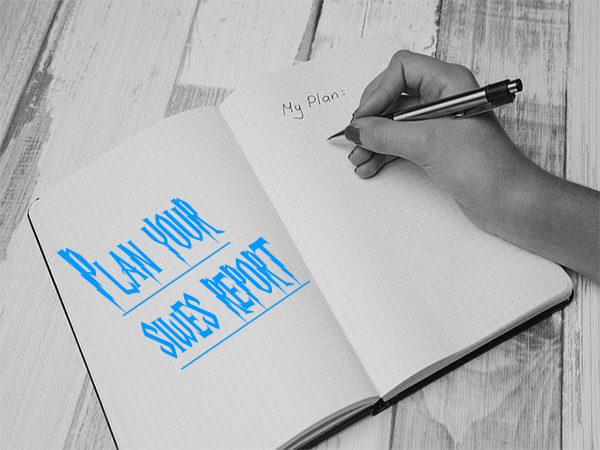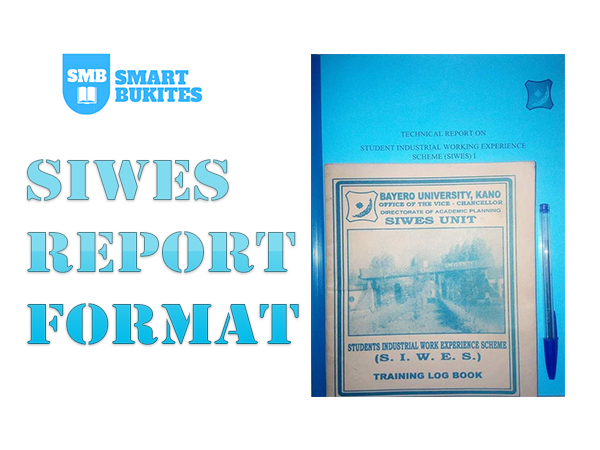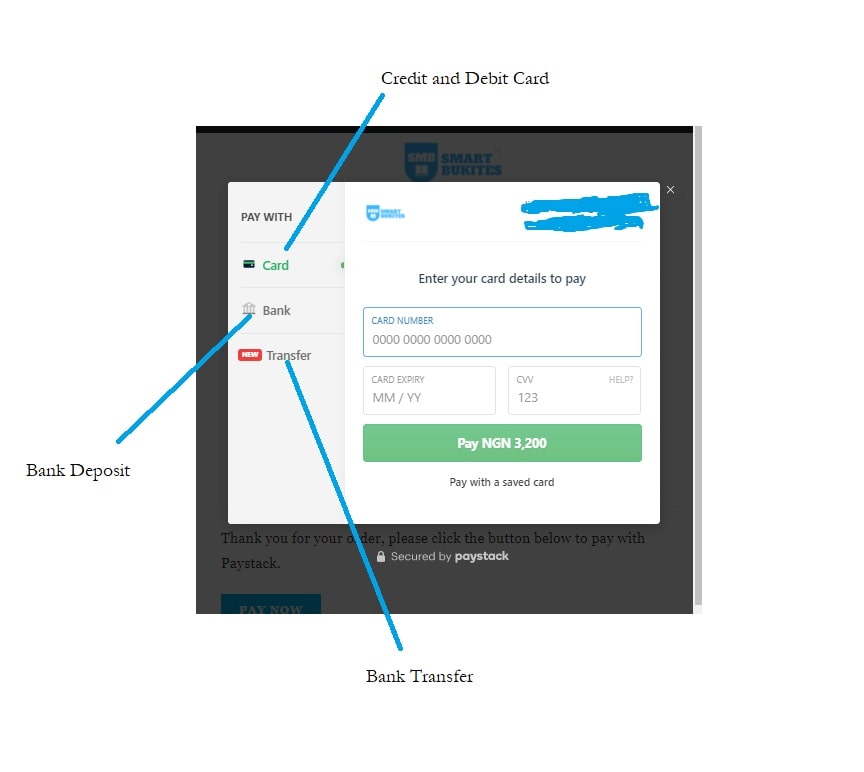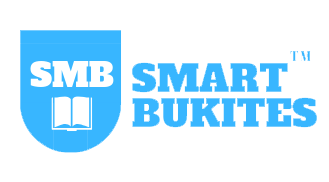Learning is not only for the 4 walls of the classroom. Undergraduate students, especially those studying STEM-related disciplines, need industrial experience to prepare for life after graduation. That is the main purpose of Students Industrial Work Experience Scheme (SIWES). Among other things, it enables students to apply their theoretical knowledge in real work situations. The history of SIWES in Nigeria shows that it was established to bridge the gap between theory and practice.
SIWES usually lasts for about 3 to 6 months, depending on the students’ department. A well-documented SIWES Report must be submitted at the end of the period. Obtaining an A-grade is everyone’s aspiration. However, it comes with a lot of sacrifices, hard work, and determination.
This article aims to reveal the hidden secrets in writing an excellent SIWES technical report. At the end of this article, SmartBukites offers premium samples of various A-Grade SIWES report templates.
Ready for your A+? Let’s dive in!
Ready for your A+? Let’s dive in!
Meaning of SIWES Technical Report?
Firstly, let’s get the concept behind the SIWES report.
The SIWES report summarizes all activities that occurred during the internship/industrial training. This includes experiences, skills acquired and even problems encountered. For a great grade, your SIWES report should be written in a well-structured way, with references where appropriate. Note that your SIWES report contributes at least 40% to your final grade!
Key Notes on SIWES Experience
With the experience and exposure it entails, SIWES increases student’s employability and communication skills. It also familiarizes students with their chosen career paths and the prospective work-place environment.
Before the end of SIWES, students should seek explicit approval certifying no confidential materials or documents are included in the report. Also, students should present their findings at their SIWES station, including acquired skills and contributions. These are great additions to your CV/Resume!
The following should be considered:
- Length of training
- Preliminary information
- Technical report/diary
Wondering How to Start Planning Your SIWES Report?

If You Fail to Plan, You are Planing to Fail!
Appropriate planning helps in coordinating the documentation of all the activates during the internship. Ensure you make plans before writing reports as it will serve as guidance for a successful Industrial Training report. Keep reading for a break-down of how to write a good SIWES Report.
Time needed: 7 days.
SIWES Report Format
There is a standard format for writing A-grade standard reports. Some elements of the report may be changed, but there are still some basic sections which every SIWES report must contain. The following is the standard format of a SIWES Report, according to the Faculty of Engineering, Bayero University, Kano.
Note: In some cases, your SIWES Report may not need to contain all the listed sub-sections.
- COVER PAGE – This should include the following in the stated order:
University Logo on the right side
Title: Technical Report on Student Industrial Working Scheme (SIWES I/II)
[Font size 18, Times New Roman]
Place of SIWES name.
[Font size 16, Times New Roman]
Student Name & Registration Number
[Font Size 14, Times New Roman]
Month and Year
- PRELIMINARY PAGES – These are sections which are usually written last but are presented in the first pages of the report. They include:
- Abstract: The abstract is the face of your SIWES report.
To a large extent, it determines how well your report will be graded.
An abstract contains a concise summary of the Industrial Training (IT) Report. Here, you summarize your introduction, aims, and purpose of the Industrial, experience, problems, and way forward. It should be brief and straight to the point, no long stories.
- Certification: This is a page that testifies that the SIWES Report was compiled by the author. It contains a testimony-like statement with the full name and registration number (and/or department) of the student. It is duly signed by the student and his/her supervisor(s).
- Dedication: The dedication section of your SIWES report contains information on whom or where the student dedicates the work to, either to God, deity, someone dead or alive. Make it brief and captivating.
- Acknowledgement: During the course of your SIWES, you must’ve come across people who contributed to your experience. The acknowledgement section of your SIWES report showcases information about people you appreciates as contributors to the success of your SIWES. We advise you to acknowledge your supervisor and lecturers.
- Table of Content: This contains details on the main headings, subheadings, and page numbers of the work. Each page number is derived from the page number of the heading. It should be checked when other pages are been completed to see whether they tally
- REPORT BODY (CONTENT): This consists of about 4 to 5 chapters:
Chapter 1.0: Introduction – Here, provide brief history of SIWES and how it was established. You should acknowledge the rationale behind the SIWES or Industrial Training (IT). You may also state objectives of the program and the importance of the training. The section may be structured thus:
1.1 Background of the study
1 2 Brief history of the Students’ Industrial Work Experience Scheme (SIWES)
1.2.1 Aim of SIWES
1.2.2 Objectives of Students’ Industrial Work Experience Scheme 1.2.3 Relevance of SIWES to field of study.
Chapter 2.0: General Principles of Management (Theoretical Framework) –
This is where you outline the various departments in the establishment and its function: This is where you enumerate different sections in the organization. After stating the different sections or departments, the student is expected to explain their functions. The section may be presented thus:
2.1 Data about the company [Information on the establishment where the training was conducted]:
2.1.1 Name of the Company/Institution
2.1.2 Address of the Company.
2.1.3 Commencement Date.
2.1.4 Activities of the Company/Institution
2.2 Organizational set-up of the company
2.2.1 Organizational structure (including organogram or chart) of the Company/Institution [Mention the different operations/offices and the responsibilities of the office-holders in the organization. For example, Managing Director is the owner of the organization and the general overseer who makes the final decision in the office.]
2.3 Professional Ethics
2.3.1 Code of conduct which the company/Institution follows in terms of ethics
Chapter 3.0: Analysis of Production/Services/Institution – This is where the student explains more about the activities of the organization, the projects carried out during the period of internship, and the personal experience he/she gained while participating in those projects. This can be a step-by-step procedure for producing a particular commodity for production companies.
The student is also expected to state in concise and clear terms what he/she can do on their own based on the experience gained.
This part of the report has to be in detail with charts (if any) and photographs of both the projects carried out and the tools used. However, avoid making the report too bulky.
The section consists of:
3.1 Ergonomics
3.1.2 Health Safety and Environmental Management (HSE) of the company/Institution. 3.1.1 Company Policy, Layout, Objectives and Strategies
3.2 Products and/or Services
3.2.1 Machines/software/equipment used in the company.
[Tip: State personnel required to operate them]
3.2.2 Images of machines/software/equipment
[Tip: Use real workplace images rather than internet-downloaded ones]
3.2.3 Material handling
3.3 Quality Engineering (Control)
3.3.1 Responsibilities and activities of Quality Control/Quality Assurance in the company
3.3.2 Tools and equipment used for quality assurance.
3.4 Maintenance Engineering
3.4.1 Company or Institution Maintenance policy
3.4.2 Material procurement
Chapter 4.0: Industrial Experience – This section should be realistic and original. It consists:
4.1 Actual work carried out (with clear account of experience acquired)
4.2 Problems encountered during the SIWES period in the company/Institution
[This is where the student explains the problems encountered. The student must have experienced or identified problem(s) or area(s) that requiring improvement or evaluation while undergoing training in the institution. Moreover, this is an opportunity for the student to express his/her self.
The challenges (problems) encountered meant here could be from the place of attachment or from the SIWES body. Nevertheless, the student is expected to be free in expressing his/herself as no one has never been punished for doing so.]
4.2.1 Suggest solutions to encountered problems
Chapter 5.0: Conclusions and Recommendations –
This is where you round off your report with:
5.1 Conclusions
5.2 Recommendations
In recommendations, the student is to suggest the best possible solutions he/she thinks could solve the challenges encountered in relation to the challenges stated previously. The suggestions could be addressed either to the organization or to the SIWES body, depending on the challenges identified.
Ensure you make conclusions using the information extracted from the previous chapters, then saying more about the reasons why the SIWES program should continue. That is, summarize your report in three or four paragraphs.
- BIBLIOGRAPHY/REFERENCES
You’ll need to cite the sources of the information you used in compiling your report. In this context, relevant sources could be resources gotten from the place of SIWES, some relevant articles, textbooks or online webpages.
You may either use a Reference List or a Bibliography. The two are often interchanged but the difference between them is that while a Reference List contains the sources quoted in the document, a Bibliography contains both the cited and uncited sources which were consulted while compiling the report.
Any approved referencing standard can be used here; however, we suggest APA, Harvard or IEEE Referencing Standard (Especially for Technical and Engineering Students).
Important Tips for good SIWES Report writing
References to books, term & technical papers shouldn’t be left out when making the technical report.
The conclusion should include comprehensive comments on the value of experience gained and how it relates to one’s professional career.
Advisably, a copy of the report should be submitted to the employer, a copy to the (Faculty) SIWES Office, and the other retained as a personal copy.

Additional Specifications for SIWES Report:
- Generally, the paper on which the SIWES report is printed is A4 format paper
- The “310-gram Whiteart Card” is advised for students to be used for the front cover.
- Highlight your headings and sub-headings
- Font is Times New Roman and size for the report content is 12, except where otherwise stated.
- Include page numbers
- Line spacing is 1.5.
The “310-gram Whiteart Card” is to be advised for students to be used for the front cover.
Every SIWES technical report must include the following items:
- Activities of the Organization;
- Acknowledge of the Organization;
- Summary of the Report.
In the content section of your SIWES technical report it`s necessary to include:
- Page numbers;
- Sub-titles;
- Titles.
You will be required to explain the rationale for the choice of work-place for your training. Hence, in the introduction chapter of your SIWES technical report, you will need to indicate the following
- History of the company;
- Structure of the company;
- The title and the position of the officer responsible for your training;
- Other necessary information about the company where you work.
It is necessary for all students to provide a detailed report of their activities at their assigned establishment. Therefore, every SIWES technical report should also contain the following information:
- Problems Solved;
- Problems encountered during the work;
- Supervisory work:
- Projects handled out.
In Summary, your SIWES Report should be structured as follows:
Chapter One
- Introduction
- Aims/Objectives of the programs
Chapter Two
- Description of the establishment of the organization
- Aims/Objectives of the organization
- Organization structure including the organogram of the establishment
- The various departments/ groups/sections in the establishment and function
Chapter Three
- Activities carried out in the organization or during the cause of the Industrial Training
- Report clearly on activities carried out in the organization actually with clear statements on the experience acquired
Chapter Four
- Problems Encountered
- Report clearly on the problems encountered doing your stay in the organization or while undergoing the training.
Chapter Five
- Summary, conclusion and recommendation
- State clearly your recommendation, conclusion and summary of all the activities during the SIWES program.
Time needed: 7 days.
Description of the Sections of the SIWES Report step by step
- SIWES Report Title Page
The Title Page is the first page of your report after the cover page. It contains:
The purpose of the report
The place of attachment
The student’s details
The student’s institution as well as the date of the submission of the report (The period covered can be used in place of the submission date).
Therefore, the Title page must carry the following information and in the order arranged: Name of the Institution, Faculty, Department, the Title (Students Industrial Training Work Experience – SIWES), your Name, Matriculation Number. The date comes last (month and year). - SIWES Report Dedication
It contains information on whom or where the student dedicates the work to, either to God, deity, someone dead or alive. Make it brief and captivating.
- SIWES Report Acknowledgement
It contains information about groups of people; the student appreciates as contributors to the success of the project work. We advise you acknowledge your supervisor and lecturers.
- Table of content
It contains details on the main headings, subheadings, and page numbers of the work. Each page number is derived from the page number of the heading. It should be checked when other pages are been completed to see whether they tally
- SIWES Report Abstract
It contains a full summary of the Industrial Training (IT) Report. Here, you summarize your introduction, aims, and purpose of the Industrial, experience, problems, and way forward. It should be brief and straight to the point, no long stories.
- SIWES Report Chapters
Chapter one:
It consists of the introduction and the objectives of the program. Students should acknowledge the rationale behind the SIWES or Industrial Training (IT). In the objectives of the program, students should state the importance of the training. The benefits they derived from it.
Chapter Two:
This comprises the following:
The description of the establishment of the place where the training was conducted: Here, students explain details on the establishment they were assigned to. For example, History, Location, Year founded, and progress milestones.
Objectives of the establishment: This is where you explain the different operations carried out in the institution observed during the training.
Organizational structure including the organogram of the establishment: This is where you should explain what the different operations/offices in the organization specialize in.
Organizational chart: This is where you make a sketch, describing the different ranks/offices in the organization starting from the head/director to the last person/group. Also, the student explains what they do and what they are capable of doing, stating their responsibilities clearly.
For instance, the Managing Director: He is the owner of the organization, the general overseer who makes the final decision in the office. You can use this method for others.
The various departments in the establishment and its function: This is where you enumerate different sections in the organization. After stating the different sections or departments, the student is expected to explain their functions.
Chapter Three:
This is where the student explains more about the activities of the organization, the projects carried out by the organization during the period of internship, and the personal experience he/she gained while participating in those projects. This can be a step-by-step procedure for producing a particular commodity for production companies.
Also, the student is expected to state in concise and clear terms what he/she can do on their own based on the experience gained.
This part of the report has to be in detail with charts (if any) and photographs of both the projects carried out and the tools used, while at the same time avoid making the report too bulky for reading as the supervisor might not have the time.
Chapter Four:
This is where the student explains the problems encountered. The student must have experienced or identified problem(s) or area(s) that requiring improvement or evaluation while undergoing training in the institution. Moreover, this is an opportunity for the student to express his/her self.
The challenges (problems) encountered meant here could be from the place of attachment or from the SIWES body. Nevertheless, the student is expected to be free in expressing his/herself as no one has never been punished for doing so. - SIWES Report Recommendations and Conclusions
In recommendations, the student is to suggest the best possible solutions he/she thinks could solve the challenges encountered in relation to the challenges stated previously. The suggestions could be addressed either to the organization or to the SIWES body, depending on the challenges identified. Ensure you make conclusions using the information extracted from the previous chapters, then saying more about the reasons why the SIWES program should continue. That is, summarize your report in three or four paragraphs.
- SIWES Report Reference
This is the arrangement of quoted names in the IT report in alphabetical order using the IEEE standard.
SmartBukites Report Sample Download
Smartbukites A-Grade SIWES Report Samples
What if we could assist you further in crafting your excellent report?
What if you can have access to top-notch A-grade SIWES report for different companies/Industries?
Having access to a standard report template will foster and guide you towards writing your own report. Our SIWES report samples can be of great help to students who may wish to undertake their training in a similar establishment and to any reader or researcher who is most likely to gain one or two things from the experience.
At SmartBukites, we believe in smart ways of learning and doing things and above all, we love to share our knowledge with students who are in need of them. Each Smartbukites SIWES Report Template implements the guidelines stated in this article, with helpful tips and images at intervals.
Don’t lose the opportunity to get an A-grade for your SIWES. Grab your SIWES Report Sample Now!
Couldn’t find the sample you’re looking for? Or are you still worried about writing your report?
How about a personal SIWES report writing guide? What’s that?
The SMB SIWES report writing guide offers you one-on-one assistance on how to not only write a good report but your best report!
With us, you’d get:
- A breakdown of a SIWES report
- Qualities of a good SIWES report
- Most importantly: a qualified instructor who can answer your questions, guide and help you with your writing, and offer quality feedback till you’re satisfied.
Here is how it works:
You pay -> We connect you to an instructor via WhatsApp -> Finalise your report between 2 – 5 Days.
Method of Payment
Internet fraud has been a great issue which makes everybody scared and always taking precautions of making payments online. For you to have a greater experience, we integrated different secured methods of payment. Such as:
- Card(Debit/Master)
- Bank Transfer
- Bank Deposit.

Kindly select your preferred method on the checkout page.
Want to ask a question?
If you have any questions or queries, feel free to send us an email via [email protected]
HAPPY REPORT WRITING!!!
